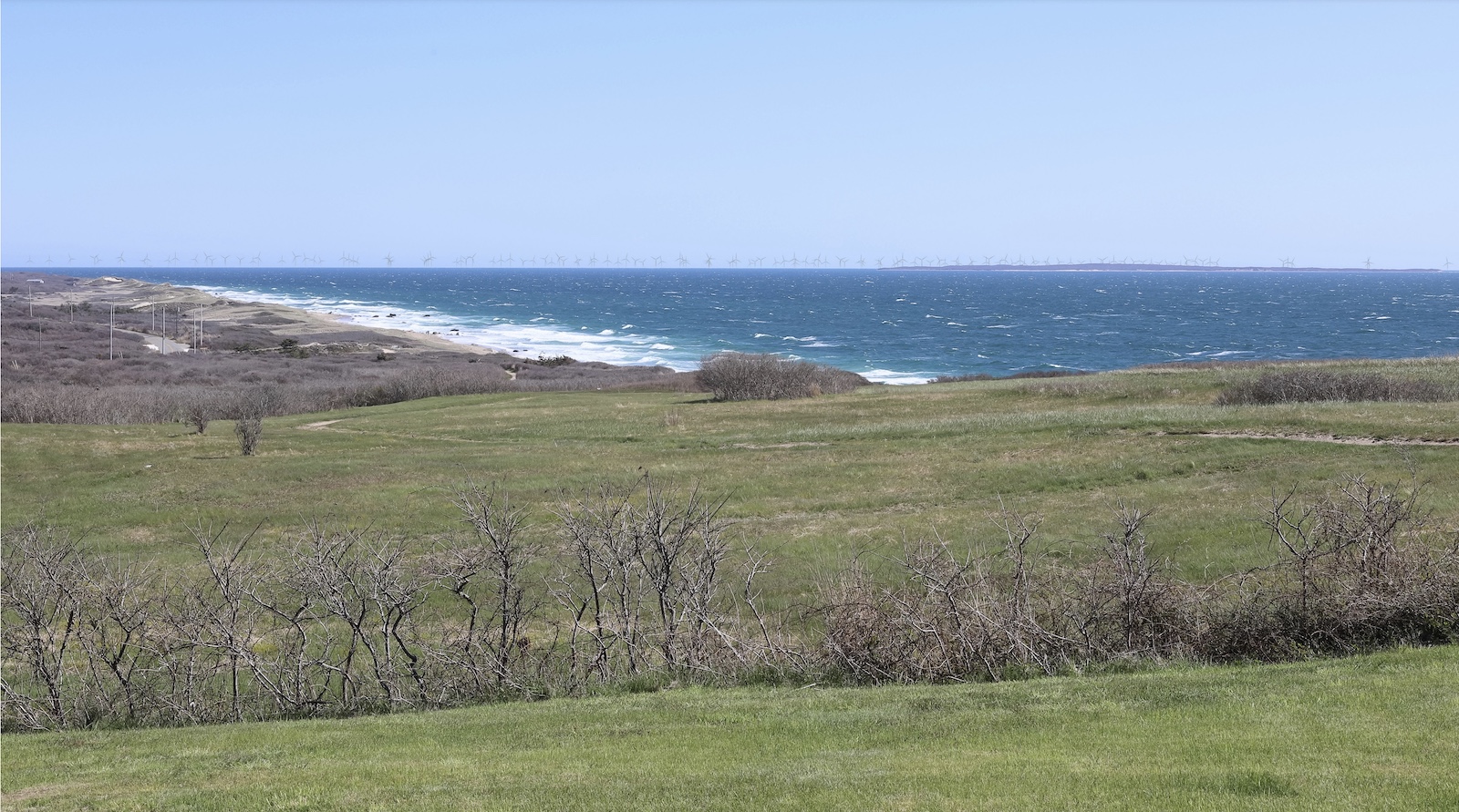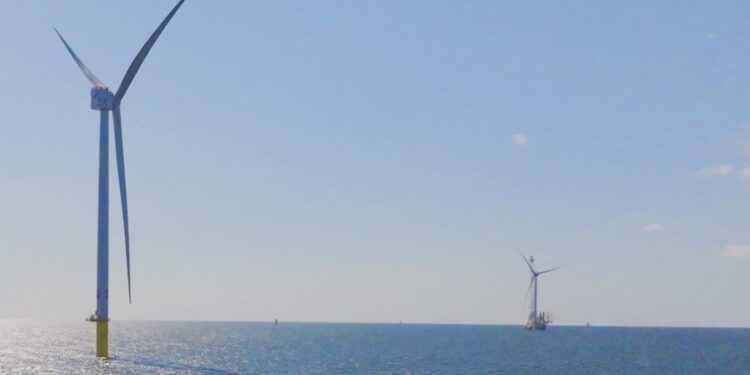The nation’s eighth commercial-scale offshore wind energy project received federal approval earlier this month to move ahead with its plans for 129 turbines off the coast of Martha’s Vineyard.
The Bureau of Ocean Energy Management on April 2 greenlighted New England Wind for an area about 20 nautical miles south of the Island. The company expects it could generate up to 2,600 megawatts, the largest claim from any of the projects in the regulatory pipeline.
New England Wind now joins Vineyard Wind, Revolution Wind and Sunrise Wind, South Fork Wind and others off the Mid-Atlantic states in approved projects.
Avangrid’s lease for New England Wind directly abuts Vineyard Wind.
— Courtesy of Massachusetts Clean Energy Center
“Today, we celebrate the incredible progress being made toward achieving our goal of 30 gigawatts of offshore wind energy capacity by 2030,” said Deb Haaland, the secretary of the Interior Department. “The New England Wind project will help lower consumer costs, combat climate change, create jobs to support families, and ensure economic opportunities are accessible to all communities.”
The project still needs local approval, though. The Martha’s Vineyard Commission has a hearing scheduled for April 11 on the company’s cable application.
New England Wind’s lease abuts the south of Vineyard Wind’s area. The former’s turbines are expected to be even taller than Vineyard Wind’s 812 feet tall turbines, stacking up to 1,171 feet high.
The turbines would be able to be seen from Aquinnah and Edgartown.
The project is backed by Avangrid and is planned to take place in two phases. It combines two projects previously known as Park City Wind and Commonwealth Wind. Avangrid also has a 50 per cent stake in Vineyard Wind.
New England Wind would connect to the grid in Barnstable. The first phase of construction could start late this year onshore and in 2025 for the offshore work, according to Avangrid’s operations plan.

Turbines can be seen along the coast of Aquinnah in this rendering of New England Wind.
— Courtesy of BOEM
Last year, Avangrid was among several companies that paid millions of dollars to get out of energy contracts that they said were no longer economically viable. Avangrid last month submitted new bids for New England Wind to Massachusetts for energy contracts, though the pricing details were not made public.
In those submissions, Avangrid expected to start producing power by 2029 and 2030 for the different phases.
Massachusetts is expected to make a decision on the energy contracts in August.
Park City Wind previously sued Edgartown after the town’s conservation commission denied its application for cables that would have gone through the town’s waters. The commission’s decision was later overturned by the state Department of Environmental Protection.




